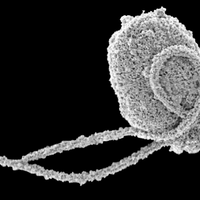predators

Some Mammals May Use Specialized Hairs to Detect Predators’ Heat
Amanda Heidt | Dec 16, 2021 | 2 min read
When observed under a microscope, guard hairs from mice resemble optical sensors used in thermal cameras to detect heat, according to a new study.

Bill to Greatly Expand Wolf Hunting in Idaho Heads to Governor
Amanda Heidt | Apr 28, 2021 | 3 min read
If signed, the law would boost funding for independent contractors to kill wolves and would allow for more than 90 percent of the population in the state to be taken by hunters.

Editor’s Picks of The Scientist’s Best Infographics of 2020
Jef Akst | Dec 15, 2020 | 2 min read
This year’s most captivating illustrations tell stories from the micro scale—such as newborn neurons in the adult brain and bacteria in the infant gut—to the scale of entire ecosystems, including reintroduced predators and rising seas.

Gray Wolf Reintroduction in Colorado Encounters Federal Kerfuffle
Lisa Winter | Nov 18, 2020 | 2 min read
This month, voters in the state approved the predators’ reintroduction, but the species’ recent delisting as an endangered species at the federal level binds up available funding.

Can Rewilding Large Predators Regenerate Ecosystems?
Katarina Zimmer | Nov 1, 2020 | 10+ min read
As some conservationists and researchers begin to return large carnivores to areas where they once roamed, scientists intensify efforts to study the ecological roles of predators.

Slideshow: How Ecologists Study the World’s Apex Predators
Katarina Zimmer | Nov 1, 2020 | 4 min read
A global decline of large carnivores has motivated scientists to understand the animals’ ecological roles, and consider whether reintroducing them can help restore ecosystems.

Infographic: How Large Carnivores Sculpt Ecosystems
Katarina Zimmer | Nov 1, 2020 | 4 min read
The release of gray wolves in Yellowstone decades ago still stands as one of the few examples of a predator reintroduction, and the lessons learned continue to be debated. New projects aim to do it again.

Image Of The Day: Predatory Protists
Nicoletta Lanese | Jul 19, 2019 | 1 min read
The protist Rhodelphis limneticus bears little resemblance to its close genetic relative, red algae.

Study: Small Fish Comforted By Big Predators
Tanya Lewis | Apr 28, 2016 | 1 min read
Baby fish show fewer signs of stress in the presence of large fish that scare off midsize predators.

Lightning-Fast Spider Bites
Tanya Lewis | Apr 8, 2016 | 2 min read
Trap-jaw spiders have the fastest, most powerful bite of any arachnid, scientists show.

Contributors
Catherine Offord | Apr 1, 2016 | 3 min read
Meet some of the people featured in the April 2016 issue of The Scientist.
